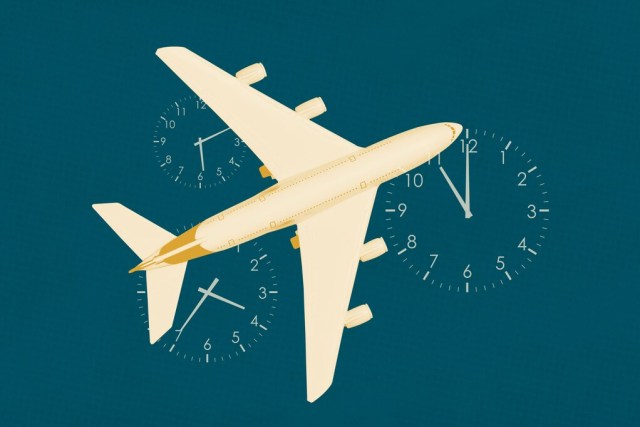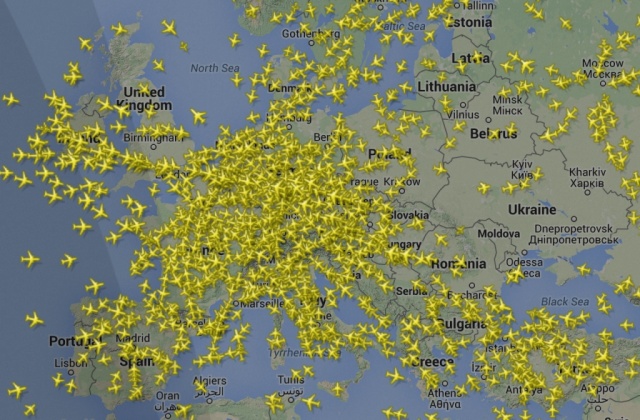The topic of flying hours is particularly important in terms of ensuring the safety of passengers.
The FAA or other national authorities set limits on how many hours a pilot can fly in a row and within specific time intervals to ensure the safety of the trip.
To secure the safety of the passengers and the rest of the pilots, pilots follow carefully planned schedules that require a lot of administrative work and software.
These timetables, however tight and well organized, are flexible since they have numerous days off followed by several days of work.
To begin, you must understand the differences between short and long trips, as well as the differences between flight and duty times.
Long-Distance Flights vs. Short-Distance Flights
A short-haul trip is 30 minutes to 3 hours long, a mid-haul flight is 3 to 6 hours long, a long-haul flight is 6 to 12 hours long, and an ultra-long-haul flight is 12 hours or more long. Depending on the length of the flight, the pilot is impacted by flight time constraints. Long-haul pilots, for example, work longer hours but have longer amounts of time off between workdays than short-haul pilots.
Flight time vs. duty time
The time a pilot spends “on the job” does not just refer to the time he or she spends operating an aircraft on the flight deck.
In a month, one of our member pilots may fly an aircraft for up to 118 hours. “Stick time” refers to the time when they are really at the controls during the flight. However, actual flight time does not represent the number of hours a pilot can be on duty.
To ensure that each flight is performed to the highest level of safety, pilots are responsible for various time-consuming tasks before and after a flight, including weather assessments, completing flight plans, executing pre-flight checks on aircraft, and filing post-flight reports.
A duty day can be more than 14 hours, including pre-and post-flight operations as well as actual flying time, especially if there are weather delays.

The Different Types of Pilots and the Number of Hours They Work
The sort of pilot certificate a pilot holds can also influence the number of flight hours he or she works. Flight instructors and airline transport pilots both have more flight hours than the average pilot working in other sorts of flight departments.
Commercial Pilot
A commercial pilot is normally in charge of inspecting the aircraft and its systems for safety and security, including fuel levels and weight and balance, as well as the accuracy of the flight plan if it was prepared by a third party. They must also communicate with air traffic control while navigating the flight’s route and responding to all changes in conditions.
Hours: 75 flight hours and 80 ground hours/month
Flight Instructor
Student pilots are taught how to operate an airplane, grasp flying concepts, inspect safety features and flight equipment, and safely take off and land the plane by flight instructors. When they are not logging flight hours, they construct particular lesson plans and follow the curriculum for ground training courses. They may also use flight training devices or simulations to train pilots on the ground.
Hours: 80-100 flight hours and 100 ground hours /month
Airline Transport Pilot
An airline transport pilot is employed for a company that transports passengers and freight regularly. A flight crew normally consists of a captain, who serves as a pilot in command and has final authority over the flight, and a co-pilot or first officer. A second officer or flight engineer may be required on some long-haul flights to monitor systems and relieve the other pilots. Many people will be away from home for several days on long-haul and/or overnight flights.
Hours: 75-100 flight hours and 150 ground hours /month.
What is the maximum number of hours a pilot can fly in a row?
FAA restrictions limit the number of hours that pilots flying for Part 135 and 121 operators can fly in a day, month, or year. There are other restrictions in place for flight instructors and other commercial operations.
Daily
An airline transport pilot can fly for up to 8 hours in 24 hours, or up to 10 hours if there is another pilot on board. Pilots must rest for at least 16 hours after each trip. Depending on the operating specifications of the organization, there are certain exceptions to these rules.
Monthly
The average airline pilot works 75 hours each month, however, they can work up to 100 hours in 30 days.
Yearly
The average airline pilot will fly 700 hours per year and is not allowed to fly more than 1,000 hours in 12 months.

In a month, how many days off do pilots get?
Seniority rules the world once more. Junior pilots will get a minimum of 12 days off, while senior pilots will have up to 20 days off. The average length of time is about 15 days. There isn’t a specific number of days off that a pilot takes each week, although it normally averages to 2-3 days off every week.
What Time Do Pilots Get Their Schedules?
The airline has a big influence on when a pilot obtains his or her schedule. Pilots can obtain their schedules up to a month before their first scheduled flight or just a week or two before their first scheduled flight. Schedules are usually obtained by the middle of the month. The amount of trip trading varies by airline, although most pilots fly the routes that are allotted to them.
Flight Time Limitations
Flight time is defined by the FAA as the amount of time the plane is powered up and moving. This includes not just the flight time, but also duties like taxiing, deicing, and waiting time if the engines are turned on. If there is just one pilot on the trip, the maximum flying time is nine hours if the pilot’s first flight of the day begins between 5 a.m. and 7:59 p.m. The maximum flight time is eight hours if the first flight departs at any other time. The limit can be increased to 13 hours if there are three pilots on the trip, and to 17 hours if there are four pilots.
Flight Duty Limitations
Flight duty begins when a pilot reports for duty with the expectation of conducting a flight and ends after he has parked the plane on which he flew his last flight. Activities such as standing by at the airport, training, and going as a passenger to take over a flight at a different airport constitute flight duty unless the pilot has a rest break that meets FAA guidelines.
The first flying time of the day, the number of pilots on the aircraft, the number of legs on the flight, and the sort of rest facilities available on the plane all influence flight duty constraints. Duty limits for a single flight crew range from nine to fourteen hours. Flight duty limits for several pilots range from 13 to 19 hours.

Cumulative Limitations
The restrictions limit pilots to 60 hours of flight duty every week, which is defined as 168 hours in a row. A pilot cannot exceed 290 hours in any 28 days, with no more than 100 hours of flight time. Pilots are not allowed to surpass 1,400 flight time hours in 365 days, according to the Code of Federal Regulations.
According to FAA regulations, an airline pilot can fly up to 100 hours per month but not more than 8 hours in 24 hours. Sure, that appears to be a good deal when you realize that most people work 40 hours or more per week, or 160 hours or more per month. Most people believe that airline pilots have it easy. When additional factors are taken into account, such as the amount of time the pilot may be idling around the airport, the reality is quite different. Many pilots perform a 13-hour shift on average. According to current FAA standards, a pilot’s maximum duty day cannot exceed 16 hours. The duty time of a pilot refers to the amount of time he or she is on the job and available to fly.
When it comes to rest, how much time do pilots need between flights?
According to Simple Flying, rest breaks must be at least 10 hours long, with no exceptions, even for unexpected events. During the rest period, pilots must be able to get eight hours of sleep. The pilot’s rest period begins when he is discharged from duty and concludes when he reports back to duty. A pilot who has been on duty for 8 hours needs 12 hours of rest, whereas a pilot who has been on duty for 16 hours needs 16 hours of rest. When delays occur while you are away from your home base, this can be reduced in some cases. Split Duties can also be used to allow the crew to rest in a hotel while on duty, extending their maximum permissible duty time in the same way that in-flight rest does
Pilots put in a lot of effort, but they also get a lot of perks.
The average pilot works 225 hours per month between flight time and ground tasks; however, depending on seniority, they are allowed anywhere from 12 to 20 days off per month. As you progress through the ranks, you have more control over your schedule, flight routes, home base, compensation, and monthly vacation days.
Motivating pilots with challenge coins: Serving as a pilot in the aviation sector is a hard but rewarding job. As part of its efforts to encourage pilots to remain active, the aviation sector offers basic benefits and hidden surprises. It is very popular to send custom challenge coins to team members. Each coin bears the employee’s name and the airline’s logo. When pilots receive such a challenge coin, they will be extremely excited. Custom challenge coins are now available for your team members! Tap here for more information

Do pilots have to return home every night?
Short-haul domestic flight instructors and pilots can generally return home every night; however, airline pilots who fly longer routes are unable to return home every night and can spend up to two weeks away from home at a time.
To summarize, The hours and schedules of flights are critical factors in ensuring safety. To avoid any more issues, a great deal of calculation must be done.

Sources :
- https://www.flyingmag.com/how-many-hours-do-pilots-work/
- https://acpa.ca/pilot-life/life-of-a-pilot.aspx
- https://executiveflyers.com/what-is-an-airline-pilots-work-schedule-like/
- https://work.chron.com/duty-limitations-faa-pilot-17646.html
- https://www.flightdeckfriend.com (Cover image)
Discover more from Aviation for Aviators
Subscribe to get the latest posts sent to your email.





















You must be logged in to post a comment.